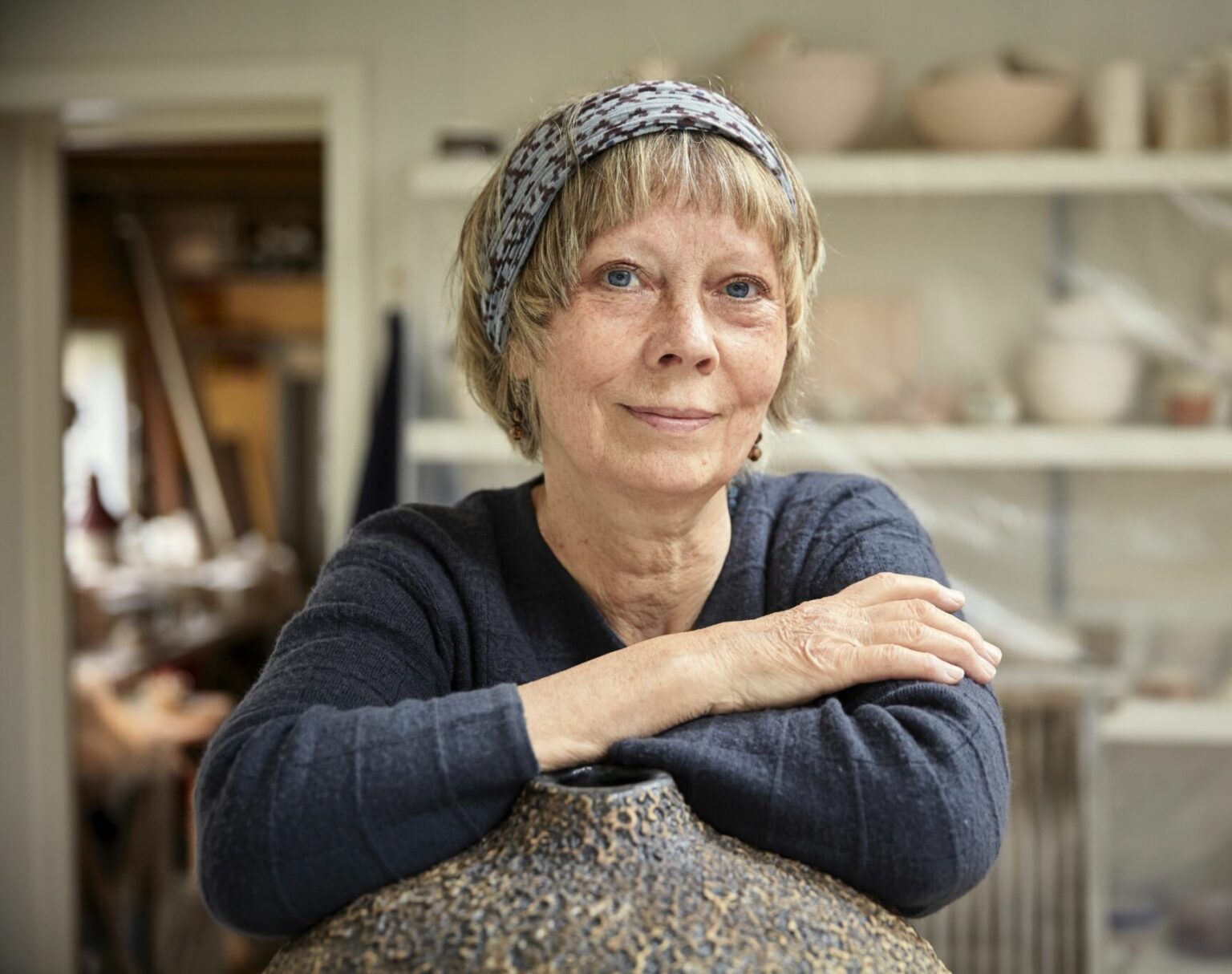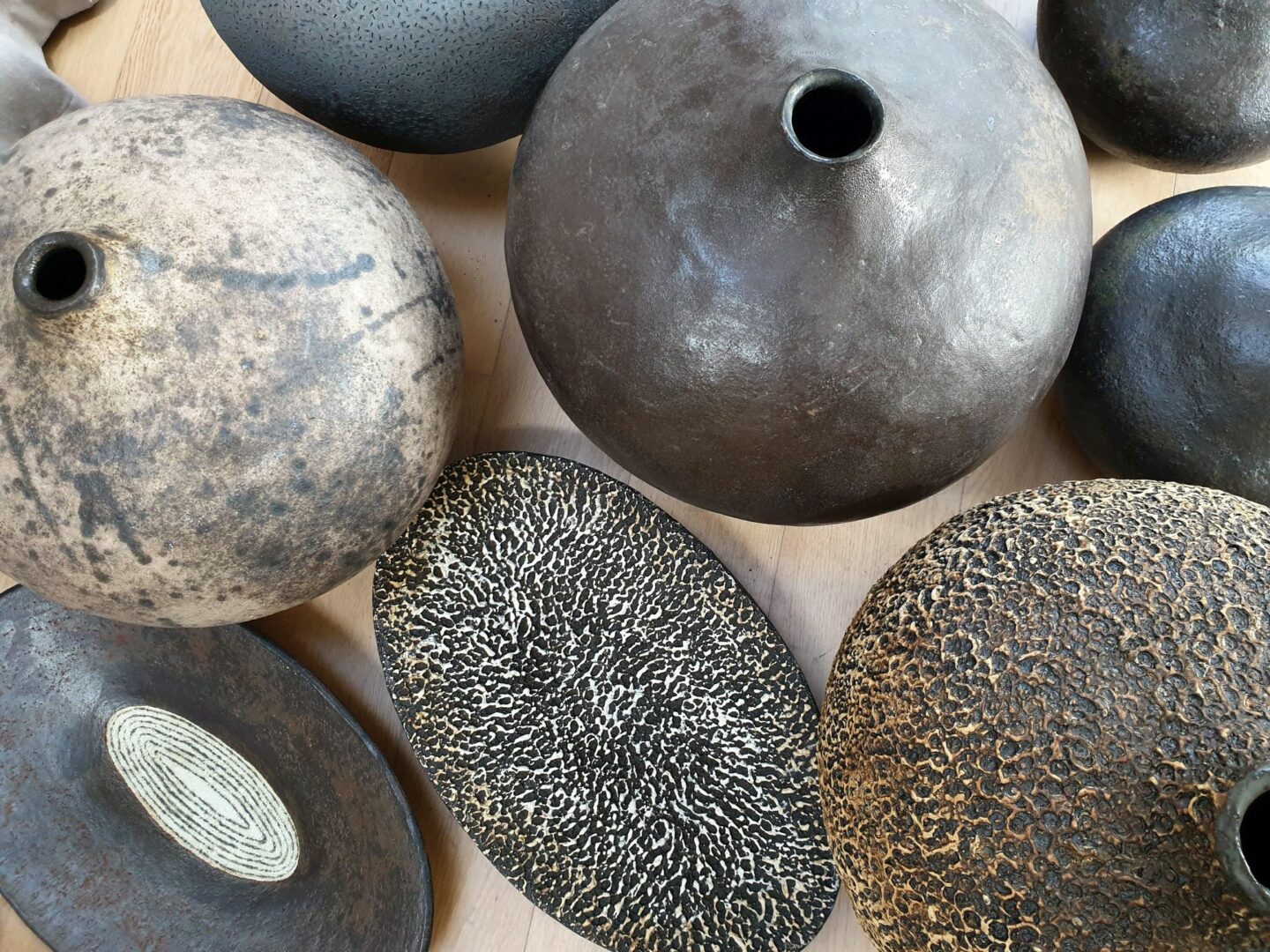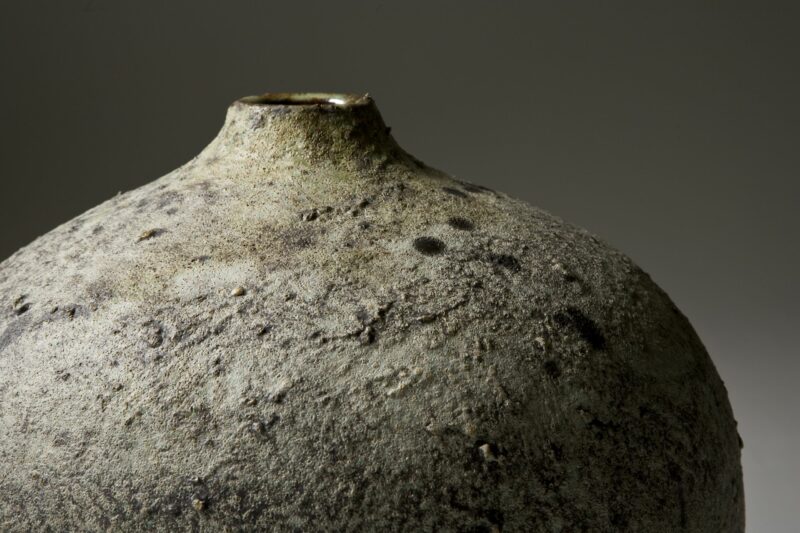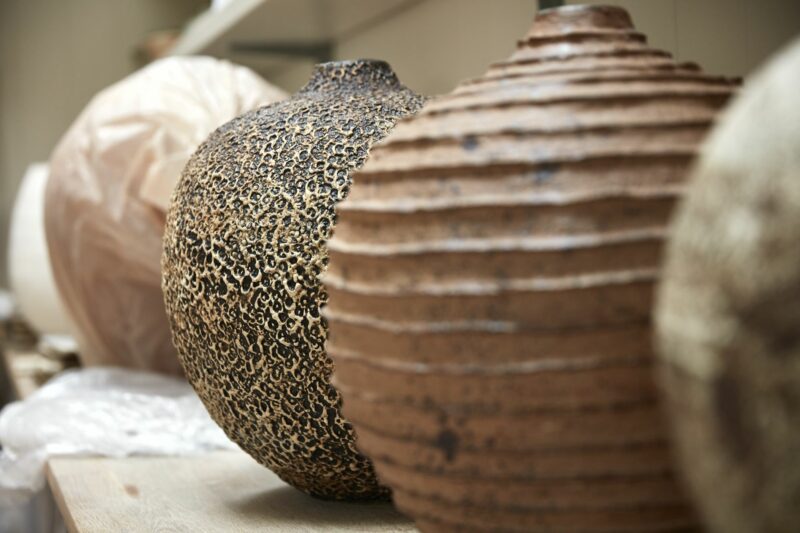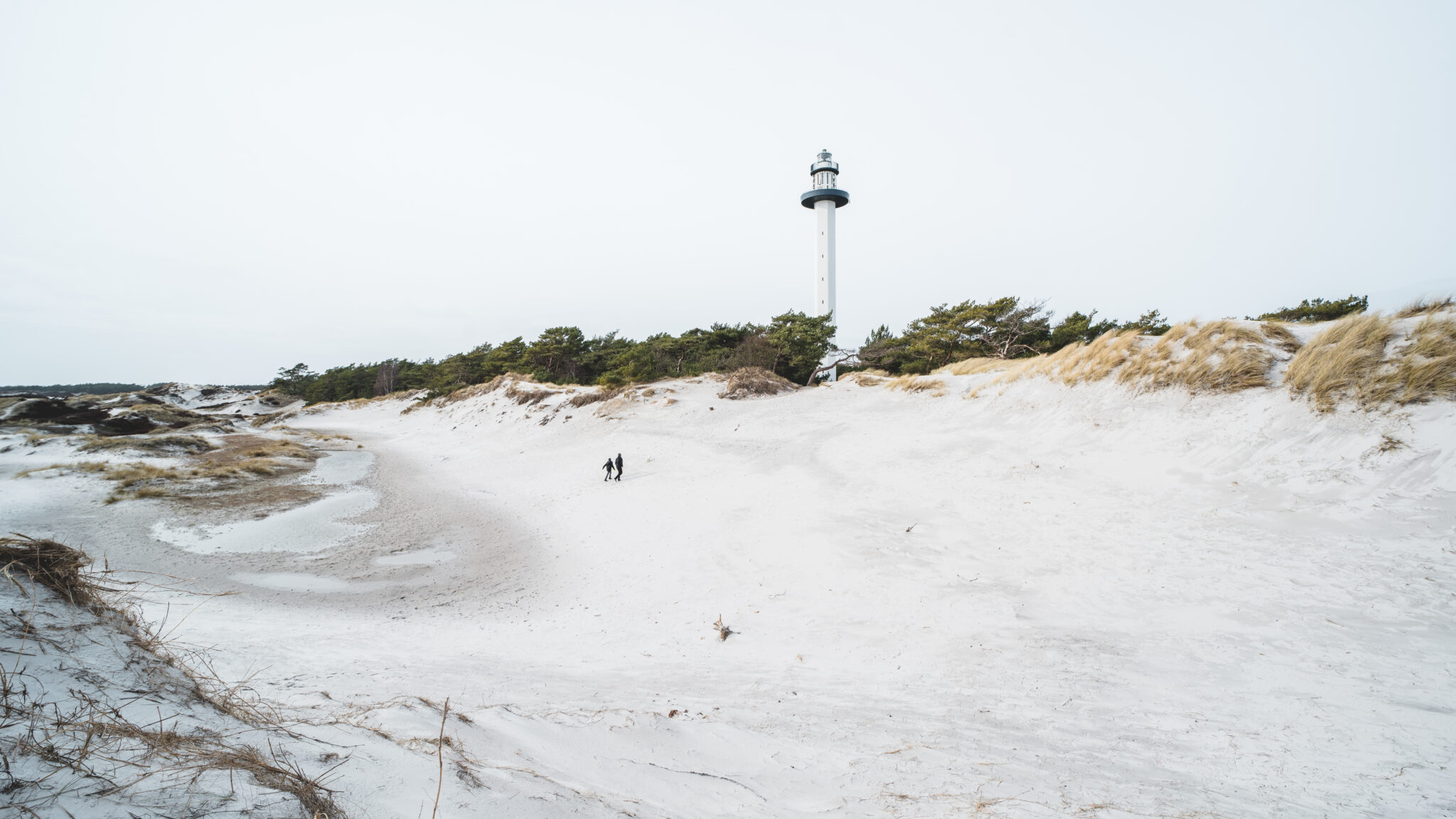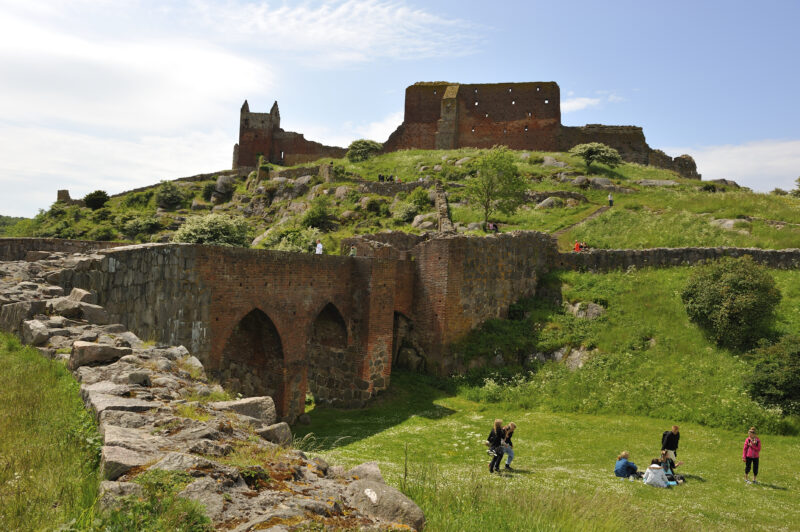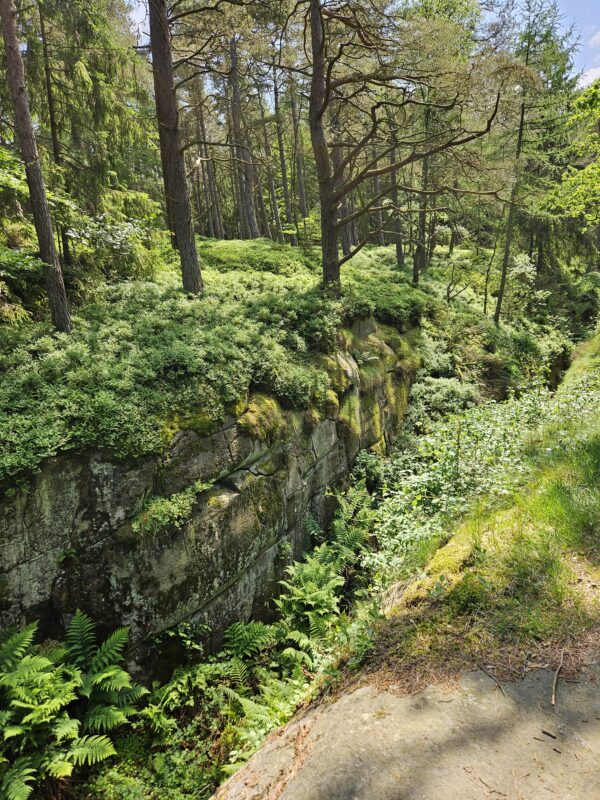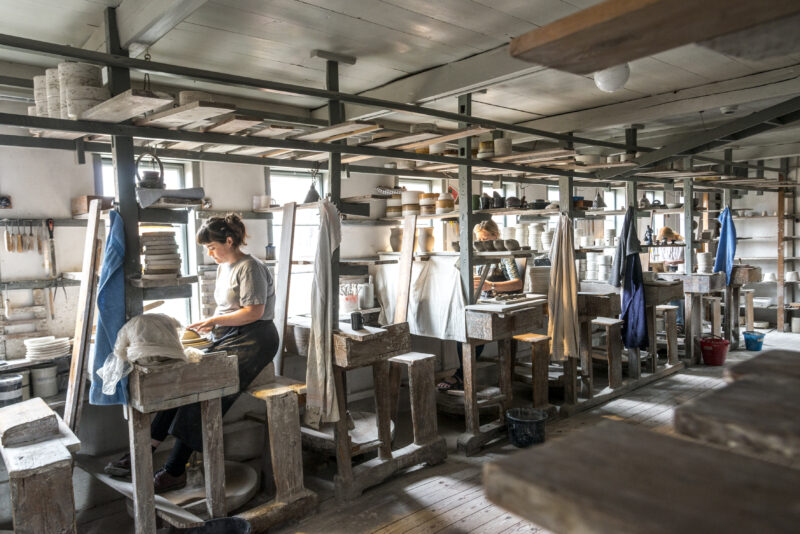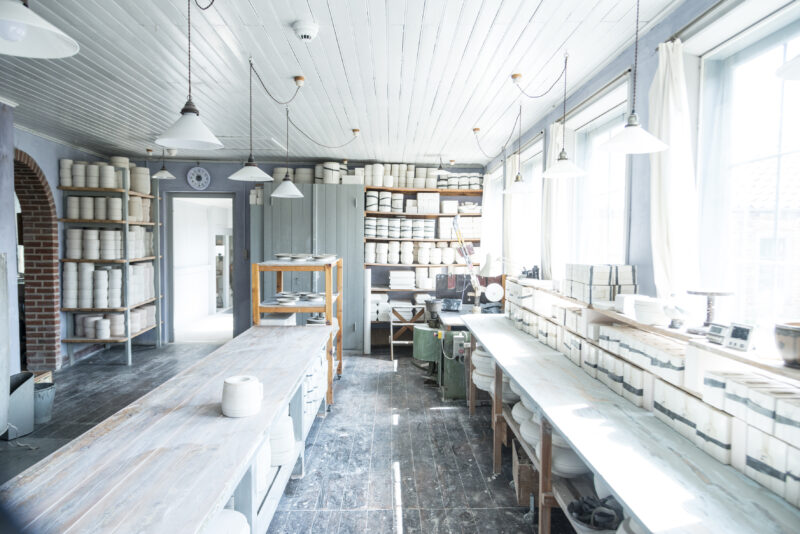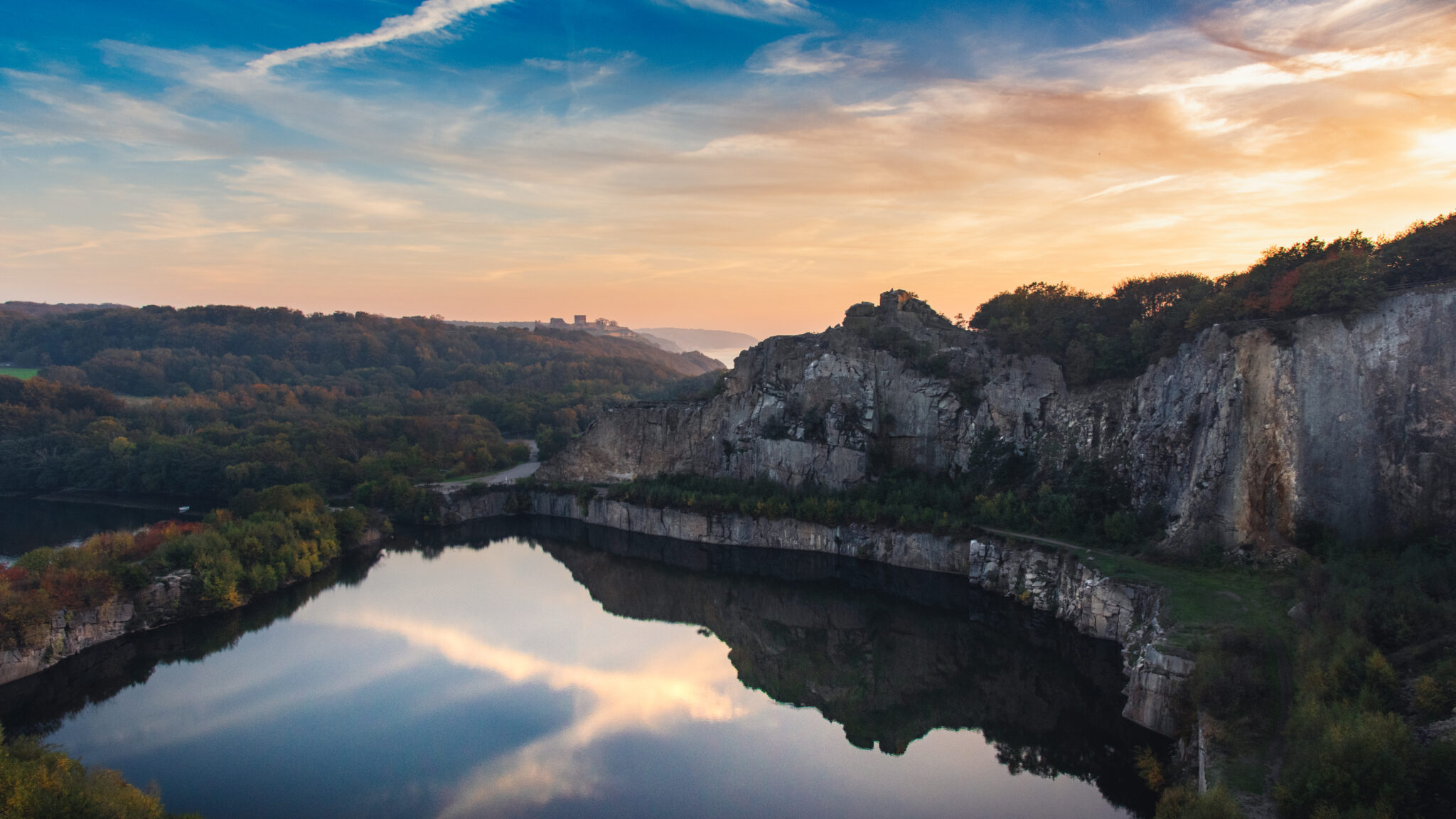Deeply connected to the rugged landscape of Bornholm, Eva Brandt draws continuous inspiration from the island’s distinctive geology and her overgrown garden, now a cultivated oasis behind her home in Rønne’s old town. Also Iceland’s raw landscape feeds her sensibility. Guided by intuition and a deep connection with her materials, Brandt allows the natural properties of clay to flow into the form and texture of each piece. Resulting in vessels that embody both the rawness of nature and the intimacy of human touch.
Brandt’s work—rooted in traditional Native American coiling techniques, learned during a study trip to New Mexico in 1996—is recognized for its tactile, ‘weathered’ surfaces and organic forms. Many visitors describe her shop as an intimate, immersive space that echoes the atmosphere of her ceramics: raw yet refined, grounded in nature yet reaching beyond it.
© Courtesy of the artist
Which place do you currently call home and where do you work on your projects?
I live and work on Bornholm, a rocky Danish island in The Baltic Sea. It is the only place in Denmark where you find such rocky nature. My house, built in 1875, lies in the old part of Rønne. In the garden behind the house, I have my old and new ceramics studio and a tiny shop, where I sell my work. The shop is open 2 days a week all year round. The studio is where I make all my ceramic work, from mixing the clay to the final firing. The location is 5 minutes from town centre and yet very quiet.
Where is your studio located & how does it look?
My studio (the old yellow studio and the added ‘new’ wooden building from 2008) is located in my garden behind my house in Larsegade 23 in the old part of town. I use the old studio for ‘the dirty work’ like hand throwing, slip casting and glazing, but most of my time is spent in the new studio coiling, scraping, decorating, making new glaze tests….
My shop lies here as well, and it may be the smallest ceramics shop to be found on Bornholm, but anyway that is where I sell most of my work! When I look out of my kitchen door, the studio buildings are to the left and the studio shop just outside to the right. It is very integrated with my private life in this way, and I hope visitors will respect this and come during the opening hours.
© Courtesy of the artist
Are there any projects that are personally important to you—whether recently completed or currently in progress?
I just took down my last exhibition ‘Krukker’ (‘Pots’)—from Grønbechs Gård (Groenbechs Gaard) in Hasle, where I showcased 13 of my newest hand-built works. It was a very popular exhibition. My next project is a 2 months long exhibition with the group ‘Earthbound’ at Gudhjem Museum next summer. And I am participating in an international tea bowl exhibition in Taiwan this fall, the 3rd Taiwan Chawan Festival 2025. And then I have a small fun project at the moment developing new glazes from local materials like granite dust, wood ash, clay….
© Courtesy of the artist
© Courtesy of the artist
Do you have a favourite place in your area where you like to relax and linger?
I love this part of old town where I live, because it is quiet, beautiful and only 10 minutes walk from a wonderful sandy beach and a dry semiwild area covered with pine, broom and wild flowers, called Galløkken. Also there are the most interesting coloured cliff formations from early Jura along the beach. I often walk here, looking for inspiration.
My work is deeply influenced by the nature of the island, especially the southern coastline from Rønne to a place called Risegård. Along this stretch you can find a beautiful chalk cliff in the small old fishing town of Arnager, where my family summer house is also located. The town has a small harbour, connected to land by a 200 m long wooden bridge, and usually sandy beaches (depending on how the wind has blown through the year).
Along the coast around Sose and Risegård you can usually be on your own. I go to the coast by Risegård to see the beautiful natural clay slopes that are coloured in light blue and deep reddish brown. Also one can find the ‘hidden’ small waterfall falling over a little slate cliff, and in March-April the path up to the waterfall is flanked by deep blue anemones. In summer the water is almost gone.
The middle of Bornholm is covered by a large forest called Almindingen. This forest is another strong favourite when I want to go for a walk. There is something magical about Bornholm, a feeling of depth and life in the underground, and there are places in the forest where it is more evident, so it is a place to go with open senses. We have fairy stories told in old times about ‘de Underjordiske’, people living underground in stones and rocks. 10 years ago a Danish anthropologist got economic funding to write his pHd about these folklore stories, and this made head lines in magazines around the world, that the Danish state funded a troll hunter.
One of the small hikes I like goes past a small pond, Kohullet, and through Rævegænget, a moist magical green passage between cliffs and tall trees, leading to a beautiful forest lake with the Bornholm name Puggekullekær. Here, I love to sit and watch the dragonflies. There are so many other places and hikes to choose as well. Bastemosen and Paradisbakkerne and Bastemosen are some of my favourite walks, too. I usually take the “back way” to Paradisbakkerne (parking at Oksemyrevejen) and walk the yellow path past Gamle Dam (Old Pond)— a beautiful secluded place teaming with natural life. Frogs, carps, dragonflies, waterliles, grass snakes.
Around most of the island there is a coast path, probably around 120 km long, interrupted by beautiful small coast towns with colored traditional houses,—some of the villages and towns are very touristy during summer holidays.
© Destination Bornholm
Are there any urgent political issues or problems in your region?
Bornholm is a small community, placed by itself in The Baltic Sea, and we have similar economic problems as other ‘fringe areas’ in Denmark. At the moment population number is decreasing. Also, the average age of the population is quite high. There is a tradition that many young people leave the island to study and live in Copenhagen or cities that we call ‘ovre’—special Bornholmian phrase, meaning somewhere in the rest of Denmark. Some return when they start a family, as it is a very safe place for children to grow up. The local municipal economy is also a cause of concern these years.
In your opinion, what has developed well in the last 5 years—and what has not?
The local arts and crafts community on Bornholm is alive and stronger than ever. The island has the highest number of arts and crafts people per square meter in Denmark. In 2017 Bornholm was awarded with the prestigeous title of World Craft Region, being the first place in Europe and the first island in the world to achieve this honour. We have a section of The Royal Danish Academy’s Design School in Nexø, offering an internationally oriented education in glass and ceramics. Each year we see graduates choosing to stay on the island to build up their new studios and benefit from the creative hub here. However, the local economy is not well at the moment.
© Destination Bornholm
© Courtesy of the artist
Do you know a hidden gem when it comes to local manufacturers—whether it’s arts and crafts, sustainable products or food?
The museum Hjorths Factory in Rønne is a very interesting place to visit. You can see the very well preserved old ceramics factory, still in function as a living museum. Very good exhibitions and a museum shop selling what is produced in the factory. Grønbechs Gaard – Bornholms Center for Kunsthåndværk is another place to go to see and buy local art works. Always 7 different exhibitions to see. Foods Bornholm is a very good initiative, taken by 15 farmers, wanting to make reseach in and produce 100% plant-based protein crops, such as chick peas, lentils, amaranth, quinoa, Ingrid peas etc. Such initiative should be supported. There are so many that I could mention. You could check our Arts and Crafts Guide for the small art and crafts studios and shops. We also have lots of small businesses producing foods of some kind. We have lots of small businesses producing foods of some kind, some of which are mentioned further down.
© Hjorths Fabrik
© Hjorths Fabrik
Is there anything particularly innovative in your region? Also in comparison to other places you have already visited?
Each year in week 24 (since 2011) Bornholm hosts a very big 3 day political democratic event called “Folkemodelt”, where politicians, organisations and all interested individuals can participate. It is a very uplifting and inspiring event.
The arts and crafts community is something special. Makers Island Bornholm is a collaboration between the arts and crafts people on the island, local museums, the local municipality and more. Craft weeks in September is one offspring of this cooperation.
We also host the international triennale ‚European Ceramic/Glass Context (ECC and EGC) with internationally curated exhibitions, artist talks, workshops.
Bornholms Økojord is a local association established to invest in farm land for organic farming, to support local food production, and to help young farmers getting started. The connected farm Hammersly in Rutsker grows organic vegetables @hammersly_oekojord.
Do you have a secret restaurant tip that you would like to share with us?
The restaurant Christianshøjkroen is a beautiful old inn in the middle of the forest in Almindingen. Go there to eat well, see the historical surroundings and take a walk in the forest.
At the moment new restaurants are opening, I would try ‚Omegn Osteria‘ in Sandvig for cosy homemade pasta.
And I would try Restaurant Dunes at the Eco Beach Camp at Balka, a summer restaurant just opened by the Bornholm Michelin-restaurant Kadeau!
Is there a local shop whose products are only available in your region?
I can mention my own shop, as I only sell my ceramic works from Bornholm, unless I have an exhibition elsewhere. Local food centre Gaarden at Melstedgård is the biggest special shop selling local foods and is located in connection with the open air museum Gaarden – Melstedgård.
We have very good local beers, locally produced ice-cream, gin (visit the new cafe at Wild Destillery in Lobbæk) and organic flour that can be bought directly from the mill Valsemøllen in Aakirkeby. Good ciders from Pilegård Cideri.
Delicious organic sour dough bread from Bager Dam in Åkirkeby and from ‚Brødre Bageri‘ i Tejn, or pastries from @lucys_bakery_bornholm.
For good new roasted coffee try @beanbuddy_bornholm or Buchwalds Kafferisteri in Torvehal Bornholm in Rønne.
What are your 3 favourite apps that you use every day and couldn’t live without?
I use Gmail often. Instagram is very useful in my work. I also like YouTube, because you can be really nerdy and find the most incredible niche videos, explore specific topics, learn new skills, travel the world while sitting in the sofa. Instagram is useful in my work.
Do you have any favourite newspapers or online magazines? And how do you keep up to date with politics or social and cultural issues?
I subscribe to the local newspaper Bornholms Tidende to know what is going on here and to have this knowledge as a basic common background. Another subscription is to an Australian magazine Ceramics: Art and Perception. Sometimes I buy magazines like Rum or other magazines about design and architecture. For world news, I listen to the Danish Radio, Danish Television, Certain Radio, podcasts and YouTube. I also subscribe to POV (Point of View International—an online independent nonprofit media platform.
© Destination Bornholm
Imagine you could be mayor for a year—what would you change?
Bornholm is—in spite of its small size—like a ‘power house’ built on old granite. It has character and deep roots. That is a good foundation. Now, I think we need a new vision for the island, that could point to new inspiring ways of green and sustainable living, and activate us to go in that direction. We need cooperation to get there and a sense of ‚Bornholms soul‘ to get it right.
I would support what is necessary to protect our wild nature, that to me is the main treasure of Bornholm and that can be destroyed in moments. We are a tourist destination, which is both good and bad, and we must take care that Bornholm still keeps its attractive quiet and ‚deep‘ atmosphere alongside with tourism.
One last question: If you could choose another place to live—regardless of financial or time constrains—which one would you choose?
I have visited and love so many places on this beautiful Earth. However, for me Bornholm is the perfect base and place to live. From here, I can travel and experience what I may be longing for.
